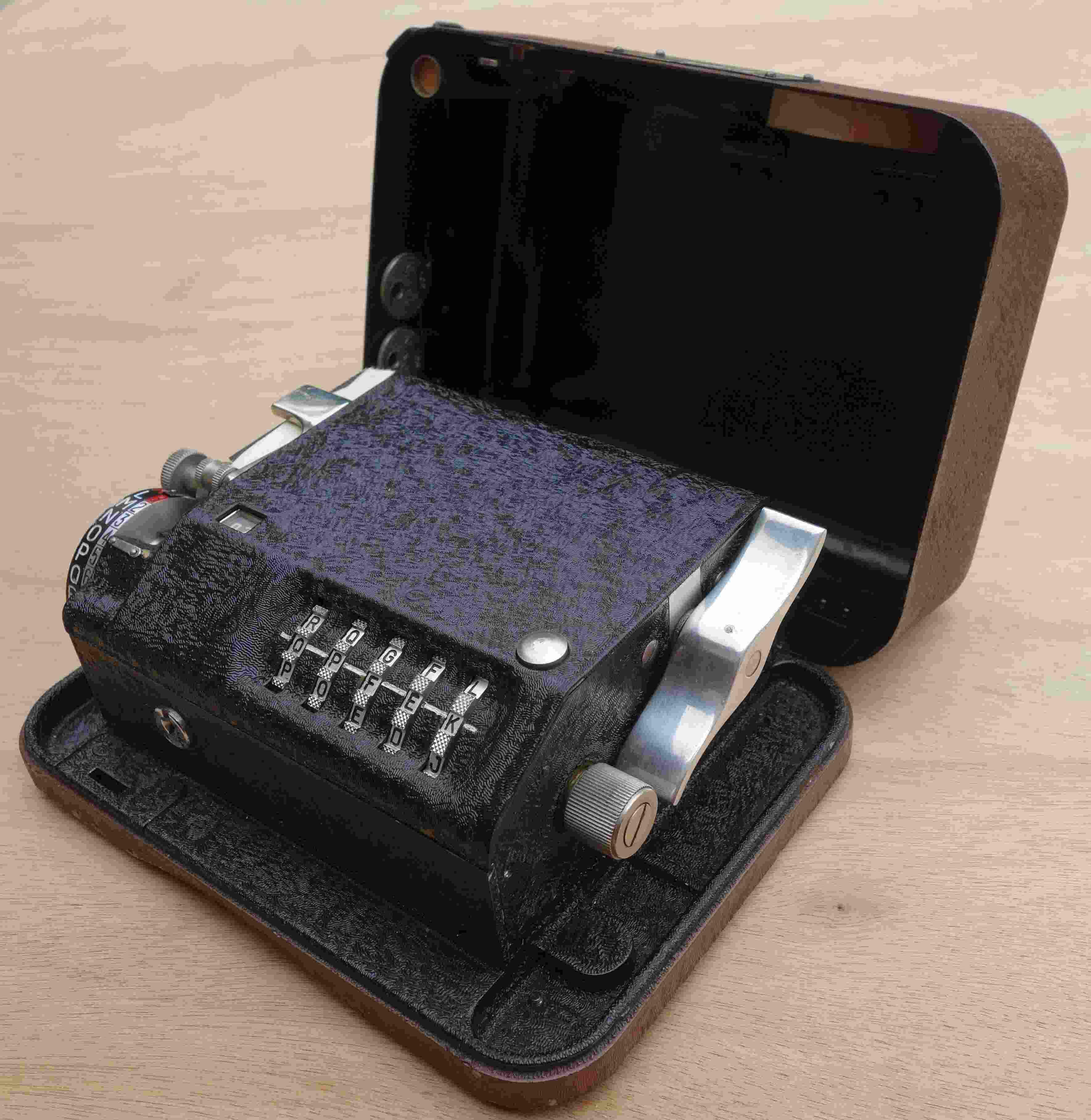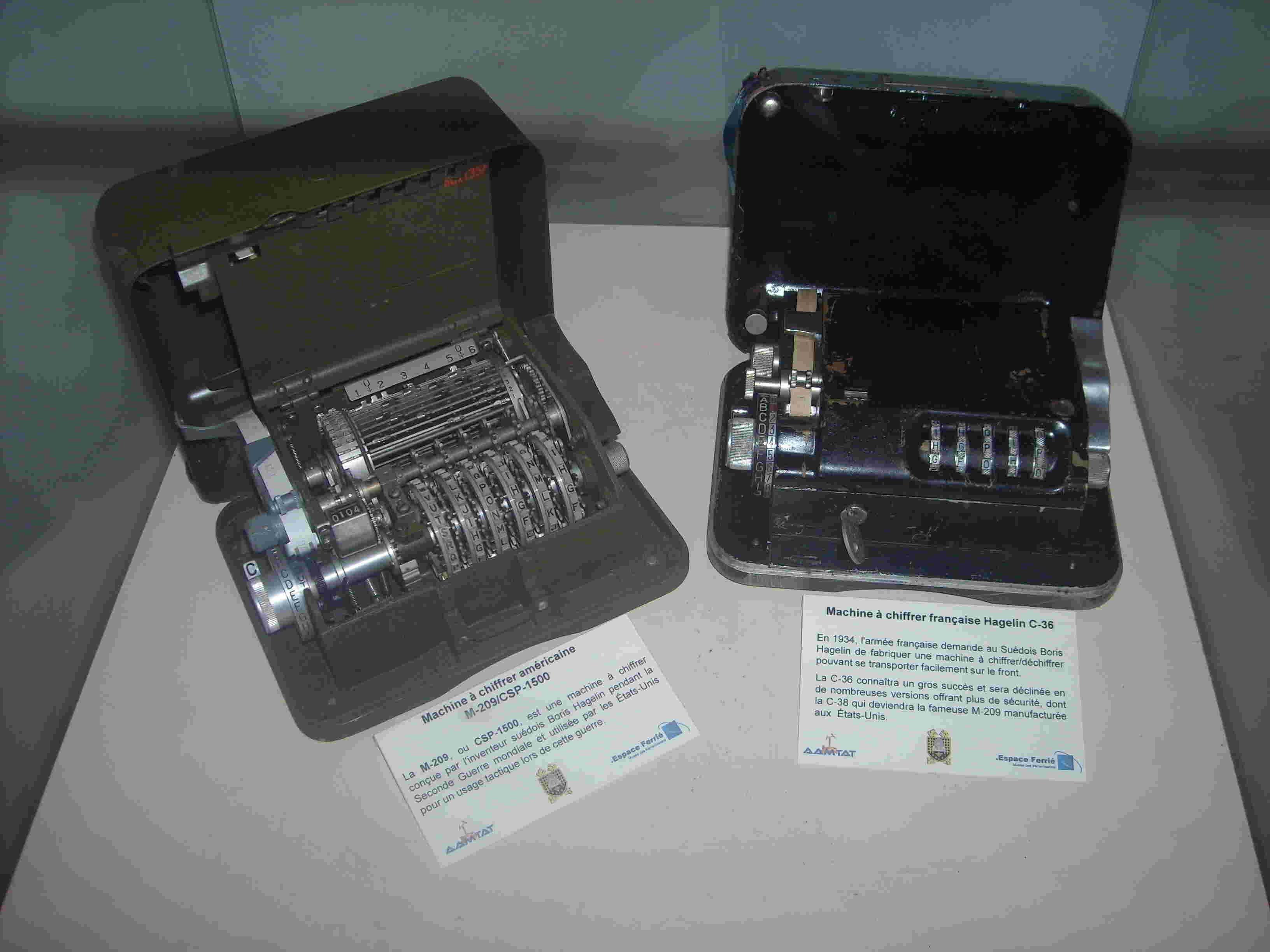French Army C-36 cipher machine
( )
(
)
( )
)
C-36 Home Page
Presentation
In 1934, the French Army asked Boris Hagelin to design a small cipher machine for small military units. In response, he constructed a revolutionary machine, the C-36, ancestor of the M-209 and CX-52. This page presents its workings, its use inside the French Army, and its cryptanalysis and focuses on the Second World War. The indicator methods and the management keys are specifically studied. In addition, some sample messages illustrate the procedures used.
Figure 1 shows the machine with the outer cover open. We can see the drive knob in metal on the right. The drive knob of the M-209 is not made of metal but has the same shape. Figure 2 shows a couple of M-209 and C-36. We can clearly see that the M-209 and the C-36 belong to the same family of machines.
 |
 |
|
|
|
Introduction
The C-36 cipher machine is extremely important in the history of cryptography. In fact, this machine was revolutionary and the ancestor of the M-209, which at one point was the most frequently used cipher machine in the world. M-209 was used more than the Sigaba, the Type-X, and the Enigma combined.
Mr. Hagelin created the C-35 (the draft of the C-36) in 1935 to meet the specifications of the French Army. Mr. Hagelin then invented a technique to create a random sequence that was added to the plain text (or to the cipher text) from a drum and a set of key wheels. Thus, the C-series was born. In the following years, he improved his ideas and created progressively secure machines: the C-38, the M-209 (American version of the C-38), the C-446, the CX-52, and the CD-57 to name only the most famous.
This page describes the history, operation, and cryptanalysis of the C-36 used by the French Army. Its chronology is used as the framework. For each period, the following topics are discussed:
- The historical context.
- The history of the C-36 in conjunction with the history of the “Bureau du Chiffre,”[1] particularly in comparison with other means of encryption.
- Use of the machine: message preparation procedures, key management, and indicator methods. Sample messages (when available) are shown.
- Finally, the point of view of the enemy (the Germans) is described along with its cryptanalysis.
- The period before World War II.
- The start of the war until the armistice with Germany (June 1940).
- The Vichy period (France is under the German control).
- The Allied period (Free France is associated with the British and American allies).
- The post-war period to the present day.
Note: A large number of the sources on which this Web page is based are derived from the archives of the Service Historique de la Défense (SHD), that is, the archives of the French Army located in Vincennes near Paris.
Footnote:
[1]: The “Bureau du Chiffre” (or simply “le Chiffre”) is the cryptographic
section of the French Army.